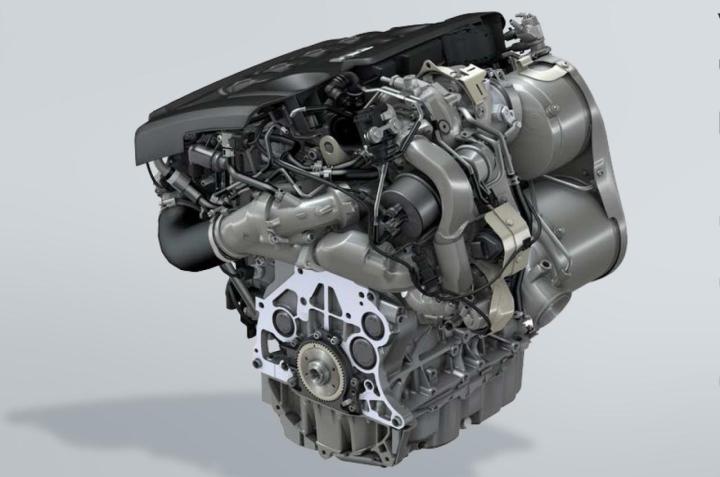
The upscale carmaker has teased development of a diesel mild hybrid system several times throughout the year, the RS5 TDI Concept being the brightest example from the company thus far.
But it was Volkswagen itself who broke the news this week, as the German firm announced a 2.0-liter, 268-horsepower TDI motor augmented by an “electric booster” at a technical presentation in Wolfsburg, Germany.
The TDI unit is the same basic engine from the all-new Passat that dropped this July, only instead of a bi-turbo system with a maximum output of 240 hp, Volkswagen has fitted an electrically driven, two-stage turbo to the powerplant, boosting output by 28 ponies.
Because the new turbine does not rely on exhaust gasses, the diesel motor suffers from no discernable turbo lag. Volkswagen also integrated a new variable valve timing system, a stop-start function, and a Piezo common rail injection unit that can hold pressures of up to 2,500 bar.
Also included in Volkswagen’s release was a preview of the automaker’s upcoming 10-speed DSG gearbox, which will be able to handle torque figures of up to 405 pound-feet.
“The reasons are obvious,” Volkswagen says. “No other automatic shifts faster, and no other automatic operates more fuel-efficiently.”
Speaking of electric turbos, Volvo recently announced similar news regarding its Drive-E engine family. The brand’s 2.0-liter prototype makes a whopping 450 hp with the aid of electric boost, although two ‘standard’ exhaust-driven units are present in addition.
Audi’s Q7 SUV is expected to integrate electric turbocharging technology in the coming years as well.


